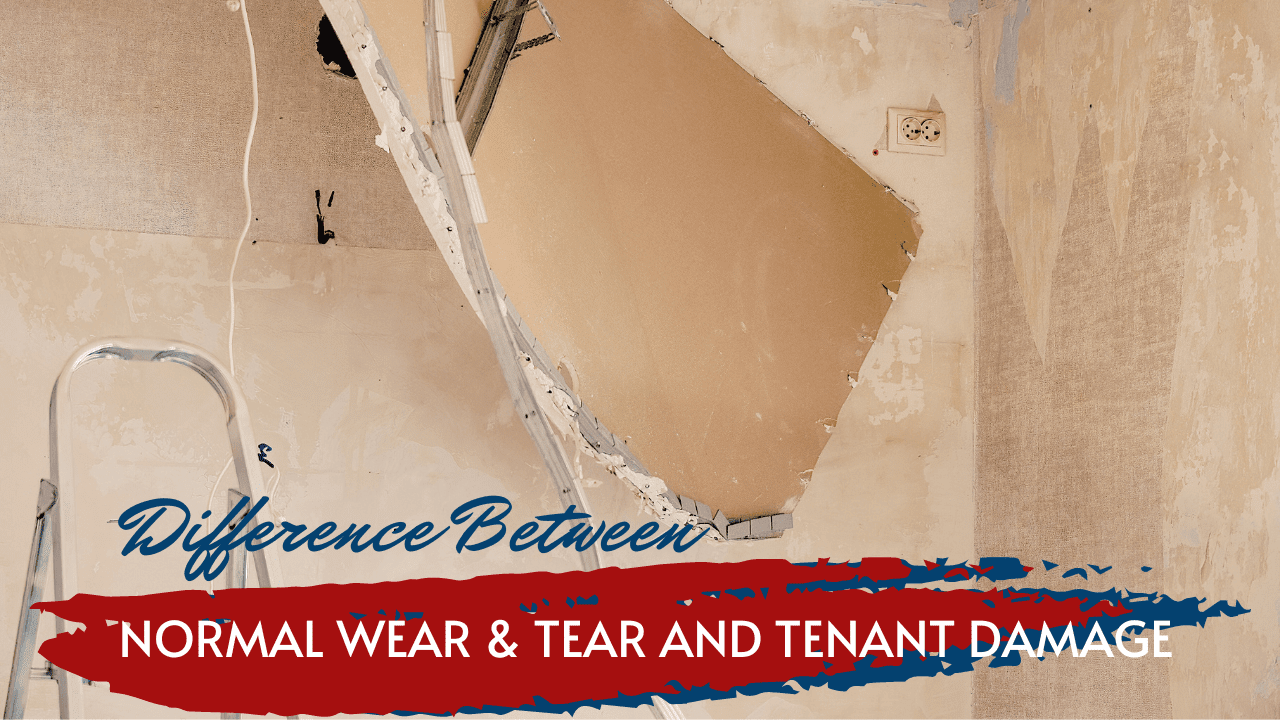
When you’re inspecting your vacant rental home after a tenant moves out, do you know exactly what you’re looking at?
As a Memphis landlord, you are responsible for paying to repair any issues that arise from normal wear and tear. This is the natural deterioration that is expected to occur over the life of a property and its systems. Certain things are going to be worn, frayed, scratched, and old. Those repairs will have to be made at your expense.
Tenant damage is different. It’s more serious than the wear and tear you’ll cover, and often more expensive. Damage is the result of abuse, misuse, or neglect. Sometimes it’s accidental and sometimes it’s intentional.
How good are you at noticing the difference?
It’s important that you do know the difference, because the distinction will impact what you may deduct from the tenant’s security deposit.
We inspect properties every day, and our experience in Memphis property management allows us to understand when we’re looking at damage and when we’re setting out to make normal wear and tear repairs and replacements.
For some landlords, it’s not so simple.
Here’s what you need to know about the difference between normal wear and tear and tenant damage in your Memphis rental property.
Identifying Wear and Tear in Your Memphis Rental Property
The definition of normal wear and tear may be easy to understand when you’re reading it, but at a practical level, it’s not always clear.
Wear and tear can be defined as the general deterioration that happens to a property regardless of who is living there. The scuff marks on the wall where furniture was resting and the worn carpet in high traffic areas are going to happen. They’re expected. These are things that likely happen at your own home, and you wouldn’t consider it damage.
Everyone experiences this type of wear, which explains why tenants cannot be held accountable for it. There’s often little that can be done to prevent it.
When you’re inspecting your Memphis property and you come across these conditions, you can comfortably decide that this is normal wear and tear:
- Small nail holes in the walls. This is evidence that tenants hung pictures, clocks, or mirrors.
- Loose grout between tiles, especially in the bathrooms. It’s going to happen over time.
- Doors or cupboards that don’t close properly. Wood can warp in humid conditions.
- Faded paint on the inside walls and exterior of the property.
- Faded or bending window blinds.
- Dents or minor holes in walls behind doors (from door handles).
- Slight carpet staining or discoloring.
- Small scrapes or marks on a hard floor.
- Finishes on faucets, light fixtures, and appliances wearing away, staining, or rusting.
These are not things you would normally charge from a security deposit when a tenant moves out. You’ll take care of these minor issues as you’re doing your turnover work and preparing the property for the listing, the marketing, and the showing process.
The amount of wear and tear your rental home experiences will depend on the overall condition of the property as well as its age. The length of time that your tenants have lived there will also impact what you’re left to repair. If your residents have been in place for 10 years and the walls have not been painted in that entire decade, you’ll have to repaint before a new tenant moves in. You’ll likely need to install new carpet or flooring and update your appliances and fixtures.
Identifying Tenant Damage in Your Memphis Rental Property
If it’s not wear and tear that you’re looking at, it’s likely tenant damage.
Unexpected property damage is not the same as wear and tear because it’s unexpected and typically it’s preventable. Tenant damage is a problem because it harms the value of your property. It makes the home less attractive and useful to future tenants.
Hopefully, the damage you encounter is unintentional and simply a result of neglect or a mistake. Damage is the tenant’s responsibility, but the tenant likely did not set out to damage your home.
So, how do you know it’s damage? Well, you wouldn’t expect cracked windows or missing floor tiles from normal, everyday use. It’s not something that occurs naturally because a person is living in the home. It instead may have happened on purpose, by accident, or due to neglect.
Tenant damage goes well beyond wear and tear, and in order to use the tenant’s security deposit funds to pay for it, you must be able to document that the property didn’t look like that when the tenant moved in. That’s why move-in inspection reports are so critical.
Here are some examples of tenant damage:
- Large holes in the walls or floors. This is different from the small holes or scuffing from pictures and furniture. We’re talking about drywall that’s been ripped out or holes the size of a fist.
- Changes to the property, such as different paint colors that were not pre-approved.
- Tears, stains, or holes in carpet. There’s bound to be some wear on the carpet, but when there’s a stain that can’t be cleaned out or flooring that’s missing or cracked, you’re looking at damage.
- Broken appliances, doors, or windows due to abuse or misuse. Maybe a child was jumping on the dishwasher door or a ball came through a window.
- Missing or cracked bathroom tiles and mirrors.
- Writing on walls, floors, and surfaces.
- Yards or gardens that have been destroyed due to animals, cars parked on them, or excessive trash.
The damage can be difficult to deal with because it takes time to repair and it also costs money. Use your tenant’s deposit and keep all of the receipts and invoices for the work. When you’re withholding money from the security deposit to pay for these things, document the amount you’re spending and why. You’ll need to provide an itemized list to your tenant that explains why they aren’t getting the full deposit back – or any deposit at all.
 You have to know the difference.
You have to know the difference.
But, it’s not always easy to know whether something is wear and tear or tenant damage. That’s why we’re here to help. Please contact us at RiverTown Realty for all of your questions or Memphis property management needs.

